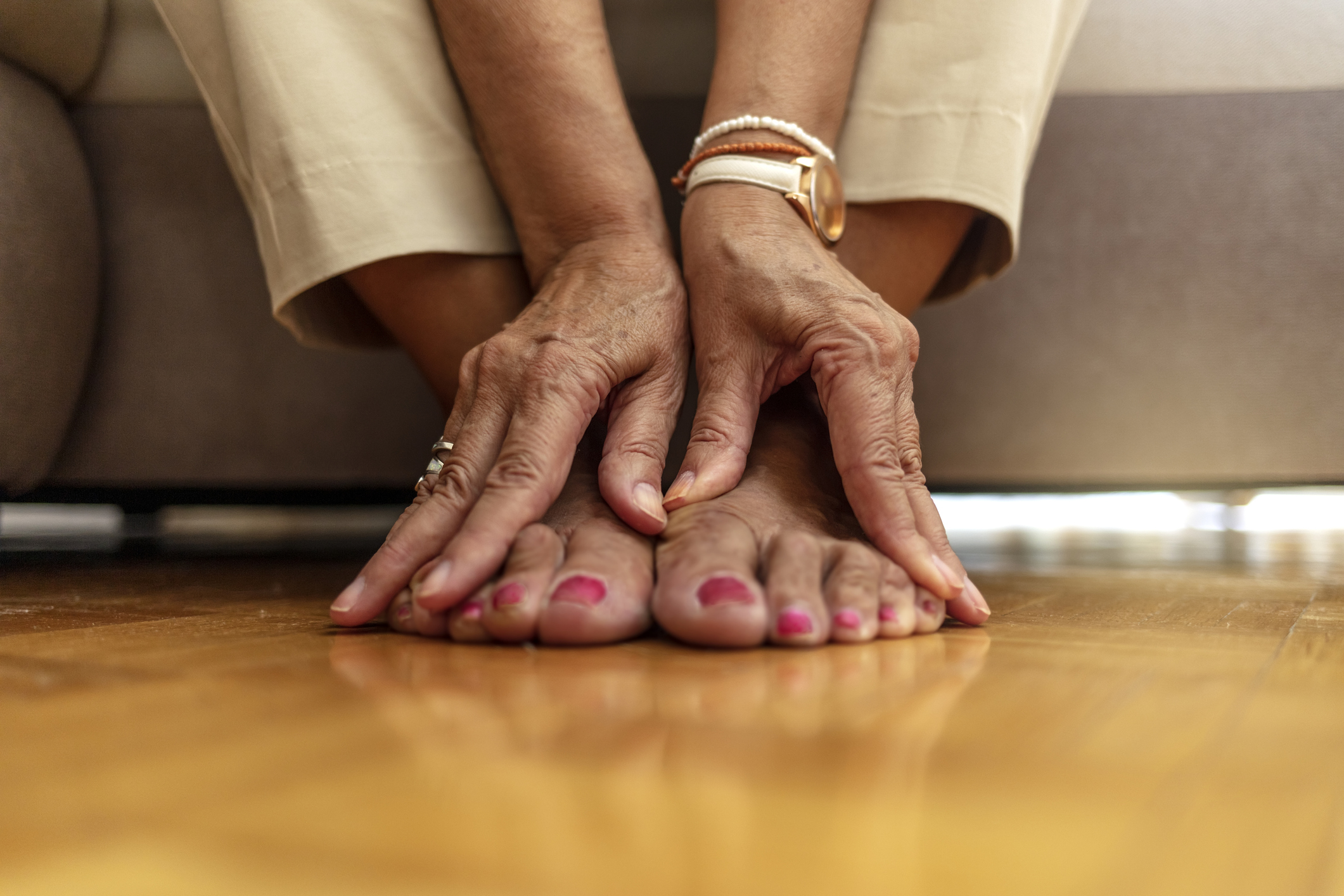
Learn how to help senior loved ones maintain healthier feet.
It’s difficult to put your best foot forward when discomfort follows each step. Foot issues are common as we get older, which is understandable; there are so many delicate parts that bear our bodies’ weight. In addition to that, because they’re so far from the heart, our feet may not be getting as much oxygen-rich blood as required to remain healthy – especially if a medical condition like diabetes limits the flow of blood to the feet.
However, many seniors choose to simply just grin (or grit their teeth) and bear it, instead of seeking assistance for aching feet. This might lead to not only growing discomfort, but compromised mobility and balance problems. Difficulties with the feet can also be a warning sign for other health problems that need diagnosis and treatment.
Be Aware of These Common Senior Foot Problems
Foot pain might result from:
- Dried-out skin. Throughout the cold winter season, dry skin is common. On the feet, it may cause cracks that are not just painful, but set the stage for infection.
- Corns and calluses. These thick areas of dry skin on the feet frequently develop from the friction from improperly fit shoes.
- Bunions. As opposed to corns and calluses, bunions are the consequence of changes to bone structure. They can be extremely painful, often developing on the outer part of the big toe joint.
- Hammertoes. Rather than all the toes lying flat, hammertoes are misshapen and point upward. You might see a corn in conjunction with the deformed toe.
- Arthritis. Arthritis can strike any joints, including the feet, creating both mobility issues and pain.
- Plantar fasciitis. Plantar fasciitis is brought on by bony growths formed when a ligament on the heel becomes irritated. Walking and standing can be extremely painful with this specific issue.
- Ingrown toenails. Toenails that grow at a different angle than usual may become ingrown into the flesh of the toe, often requiring a surgical procedure to remove.
- Fungal infections. Damp feet make an excellent breeding ground for fungus that could occur between the toes.
Dr. Said Atway, clinical professor of podiatry at The Ohio State University Wexner Medical Center, treats seniors dealing with these kinds of issues on both ends of the spectrum: highly active and developing injuries from overuse, in addition to those with a less active lifestyle experiencing limited blood flow to the feet and poor overall health. He stresses the importance of proper footwear for seniors, who should keep from going barefoot or wearing shoes with not enough support, such as flip flops.
To find the best-fitting, most comfortable shoes, he recommends:
- Shoe shopping later in the day, as gravity causes the feet to expand a bit during the day
- Trying out shoes by walking around in them for at least 20 minutes; giving them a test run on a carpeted area at home should prevent any wear on the soles of the shoes, so they can be exchanged if uncomfortable
- Seeking the recommendation of a podiatrist regarding the best kind of shoe for a senior’s unique concerns
Happier, healthier feet is an excellent goal for all older adults. Keeping the feet clean, soft, and dry, and performing daily inspections to check for issues, is suggested for all older adults. An annual visit to the podiatrist can also help circumvent problems.
Inspired Home Care, one of the top home care agencies in Chicago and the surrounding areas, are here to help older adults kick up their heels in a variety of ways: guaranteeing good foot hygiene, providing transportation to shop for shoes or to the podiatrist, taking regular walks together to improve blood flow, and much more! Contact us at 847-787-7572 for a complimentary in-home consultation today.
